Day 2 of Nara Sightseeing
Today, since there are no long-distance travels like taking the Shinkansen, I have the whole day to visit temples and shrines, so I’m feeling quite excited!
The itinerary is as follows:
JR Nara Station → Kōfuku-ji Temple → Tōdai-ji Temple → Kasuga Taisha Shrine
→ Shin-Yakushi-ji Temple → Byakugō-ji Temple → JR Nara Station
To give an overall impression, just visiting the first two temples is quite substantial, so I might have overpacked the schedule. It would have been safer to limit the day’s plans to Kōfuku-ji to Kasuga Taisha. However, the first three temples are must-see spots in Nara, and the crowds can be a concern. As someone who dislikes large crowds, it was a bit of a downer. Even so, since it’s my first time in Nara, I couldn’t miss seeing Kōfuku-ji’s precious national treasures and the Great Buddha of Nara…

On the other hand, the last two temples each have their unique charm and are peaceful locations, which I really appreciated. If you have the energy, I highly recommend visiting these places.
Now, I’ll start by introducing Kōfuku-ji Temple.
What is Kōfuku-ji Temple?
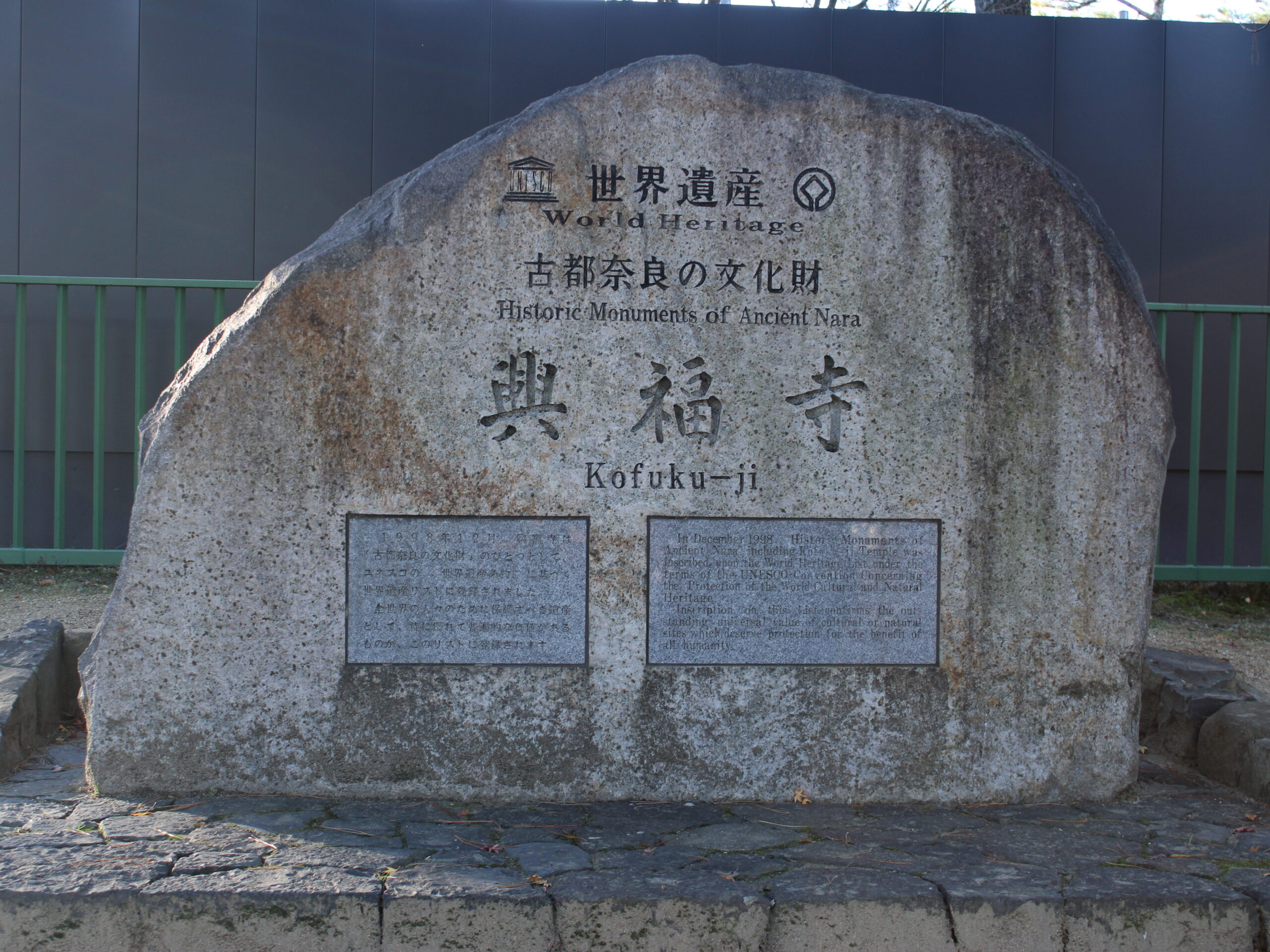
Kōfuku-ji is the head temple of the Hossō school of Buddhism and is listed as a UNESCO World Heritage Site.
Its predecessor, “Yamashina-dera,” was built in 669 when Fujiwara no Kamatari was suffering from a severe illness. His wife, Queen Kyō, prayed for his recovery, so she established the temple to enshrine various Buddhist figures, including the Three Buddhas of Shakyamuni and the Four Heavenly Kings. After the Jinshin War, the temple was relocated and renamed “Umayasaka-dera.” In 710, during the relocation of the capital to Heijo-kyo (present-day Nara), it was moved again under the direction of Fujiwara no Fuhito and renamed Kōfuku-ji.

Following that, the temple was expanded with various halls and towers built by emperors, empresses, and the powerful Fujiwara clan. By the Nara period, it was considered one of the Four Great Temples of Nara, and in the Heian period, it became one of the Seven Great Temples. The temple has particularly close ties with the Sesshō and Regents families of the Fujiwara clan.
Additionally, Kōfuku-ji is conveniently located, only about a 10-minute walk from Kintetsu Nara Station. It is also accessible from JR Nara Station, which is about a 20-minute walk away.
Exploring the Temple Grounds
As I explore the temple grounds, the most notable highlight is, without a doubt, the National Treasure Hall!
There are many precious works of art, but the three that caught my attention the most are the following.
Since photography is not allowed, I recommend checking Kōfuku-ji’s official website if you are interested.
KOHFUKUJI Temple

1. Wooden Statue of Shakyamuni Buddha (Kamakura Period, Important Cultural Property)

This statue is believed to have been created by the genius sculptor Unkei. As someone who enjoys historical walks around Kamakura, I have a particular interest in Unkei, a key figure in the Kamakura period.
Unkei’s works are known for their lifelike features and expressions, which radiate an incredible sense of presence, almost as if the figures are alive. However, Unkei’s sculptures are not always entirely faithful to reality. His physical representations often feature exaggerated muscle bulges and thickness in the body, which would be quite rare in real humans.
In other words, Unkei’s works are often somewhat stylized or deformed. Yet, despite this, the deformations are so skillfully done that they are not immediately noticeable, and they feel incredibly lifelike. Since only the head of this statue remains, it may seem like its distinct characteristics are not as obvious.
Additionally, this statue was one of the only items saved during a fire in 1717 at the Saikondo Hall. Through an inscription, it was confirmed that this head belongs to the main statue of Shakyamuni Buddha.
2. Wooden Statue of Shakyamuni Buddha (Heian Period, Important Cultural Property)

During the Heian period, a sculptor named Jōchō revolutionized the art of Buddhist statue-making. Jōchō is known for perfecting the yosegi-zukuri (joined-block) technique, which involves creating statues by assembling multiple pieces of wood, each carefully chosen for its shape and size to form the body, head, and limbs. This statue of Shakyamuni Buddha follows the style of Jōchō.
3. Standing Statue of Ashura (Nara Period, National Treasure)
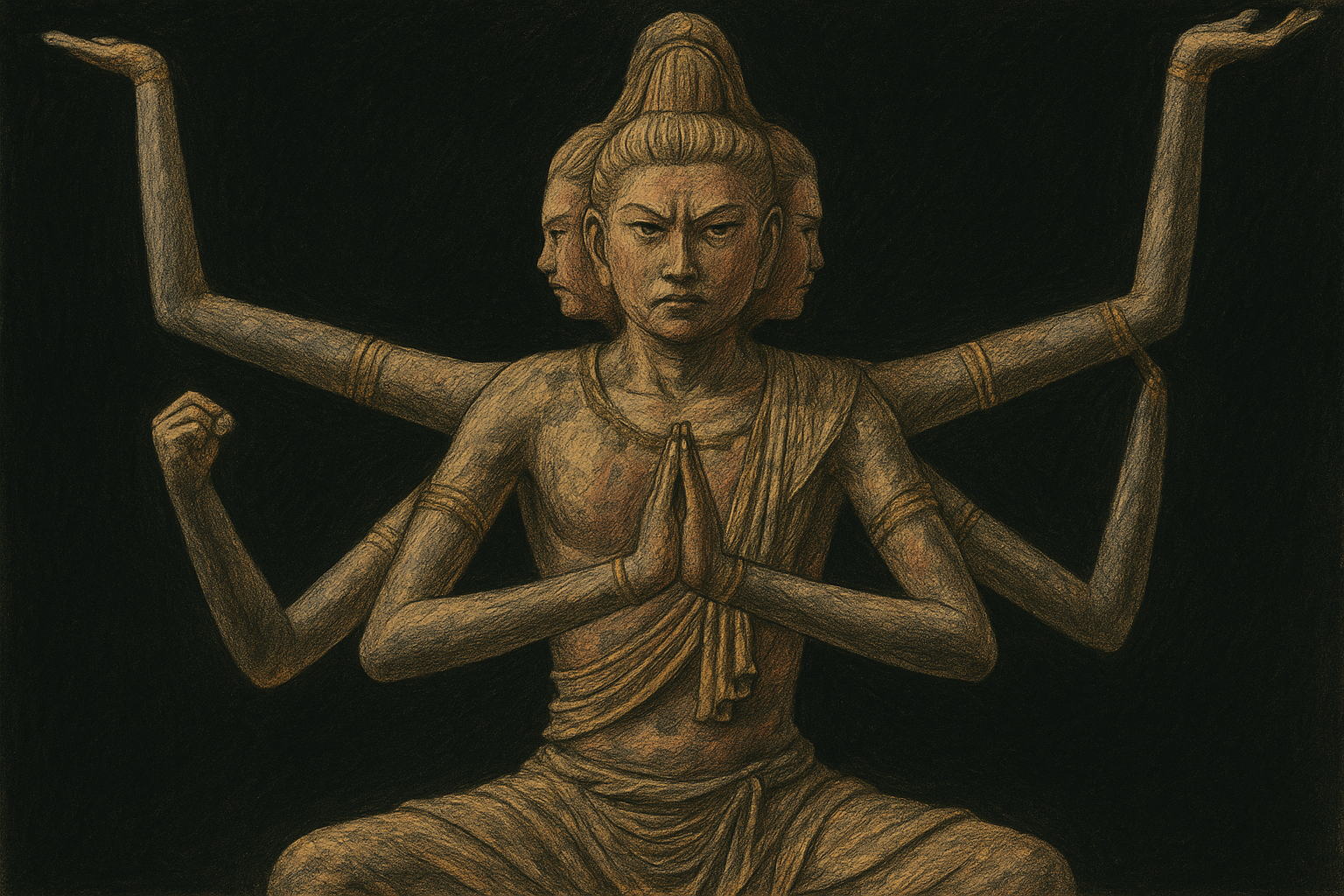
This statue is made using the dry lacquer technique and is displayed as one of the Eight Guardian Deities of the Dharma. Among them, the beauty of the Ashura statue stands out, captivating all who gaze upon it. Originally a deity of war in Indian mythology, Ashura later became a guardian figure in Buddhism. This statue is characterized by its depiction with three faces and six arms.
Bonus: Wooden Statue of the Kongorikishi (Kamakura Period, National Treasure)

The Kongorikishi statues are typically displayed in pairs, one with an open mouth (Agyo) and the other with a closed mouth (Ungyo). When viewed in person, the realistic details, intense movement, and strength are immediately evident. The statues express the sensation of strong winds, with bulging muscles and visible veins—hallmarks of the dynamic style of Kamakura sculpture. Their powerful presence became the model for later Kongorikishi statues.
This is another special piece, which I’ve added as an extra recommendation.
The Chūkondō Hall (Central Golden Hall)
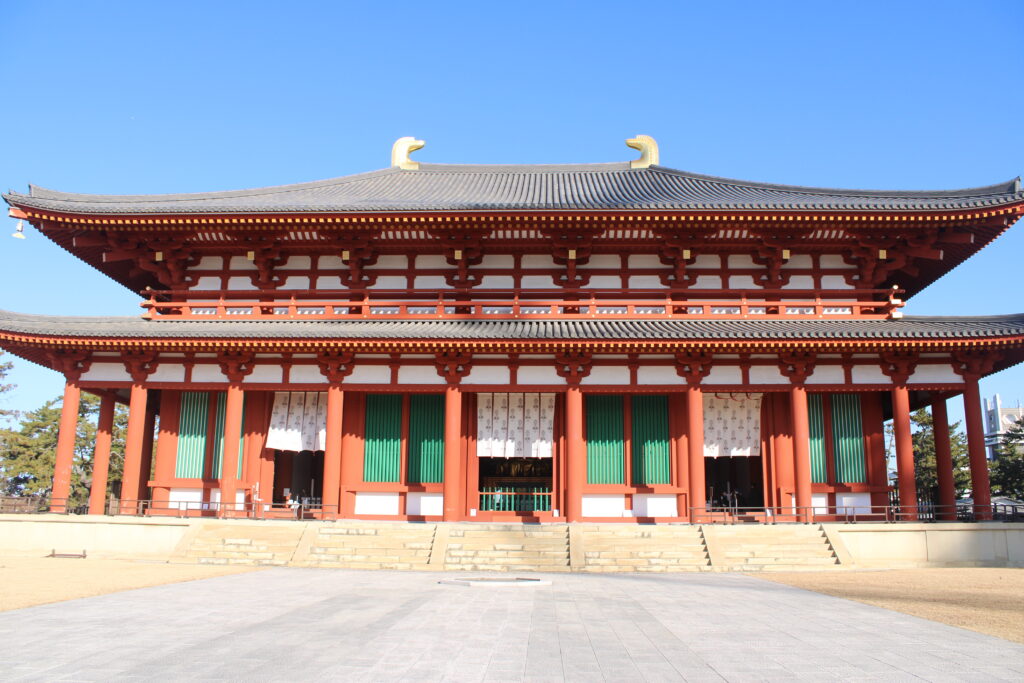
The Chūkondō Hall is another must-see. It is one of the most prominent buildings in Kōfuku-ji.
This is the central and most important structure of the Kōfuku-ji temple complex. According to temple tradition, it was founded by Fujiwara no Fuhito, who played a key role in organizing Japan’s ritsuryō system (ancient legal system) and laid the foundation for the Fujiwara clan’s prosperity. The original scale of the Chūkondō Hall was among the largest of any temple in Nara during the Nara period.
Now, what does the interior of the hall look like today? For photos, I recommend checking the official website of Kōfuku-ji.
Central Golden Hall – KOHFUKUJI Temple
In the Chūkondō Hall, the statues of Buddha are arranged around the central statue of Shakyamuni Buddha. What caught my attention was the Wooden Statue of the Four Heavenly Kings (Kamakura period, National Treasure). The movement of the statues is dynamic and powerful! It truly embodies the characteristics of Kamakura-era sculpture.

Other Notable Buildings
First, the Five-story Pagoda (currently undergoing conservation and repair…).
The Five-story Pagoda of Kōfuku-ji was built in 730, based on the wishes of Fujiwara no Fuhito’s daughter, Empress Kōmyō, who was the founder of Kōfuku-ji. After five fires and reconstructions, the current pagoda was rebuilt around 1426. It is the second tallest pagoda in Japan and is regarded as a symbol of the ancient capital, Nara.

Next, Northern Round Hall.
This hall is praised as the most beautiful existing octagonal hall in Japan. It was constructed in August 721, on the first anniversary of Fujiwara no Fuhito’s death, under the command of Empress Genshō and Empress Kōmyō, who ordered Prince Nagaya to build it.
You might be curious if it’s really that beautiful, but unfortunately, I missed the chance to take a photo… I regret it!

Lastly, Southern Round Hall.
This hall was built in 813 by Fujiwara no Fuyutsugu to honor his father, Fujiwara no Uchimaro. The current structure is the fourth building since the original construction and was rebuilt in 1789.
Inside, the main statue is a seated figure of Fukūkensaku Kannon (“the Kannon who bears the infallible snare”), surrounded by statues of the Four Heavenly Kings and the Six Patriarchs of the Hossō school. All these statues are believed to have been created by the Kei school of sculptors, led by Kōkei.
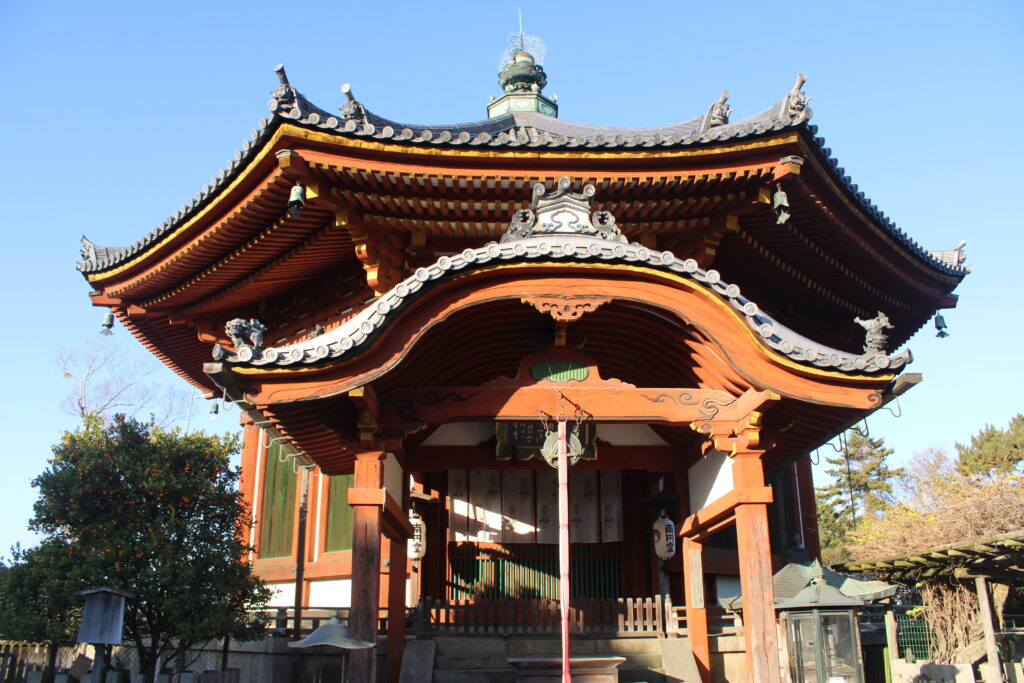
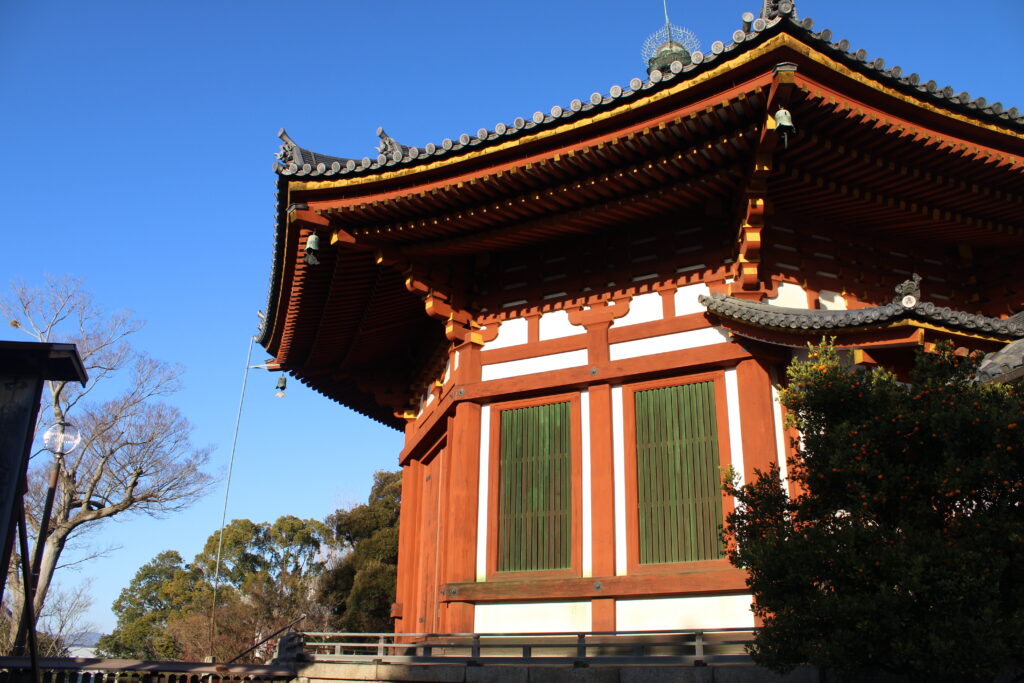
Furthermore, Three-story Pagoda.
The Three-story Pagoda was built in 1143 by Empress Kōkamon’in, the consort of Emperor Sutoku. It was destroyed by fire in 1180 but was soon rebuilt. Along with the North Octagonal Hall, it is one of the oldest buildings in Kōfuku-ji. The pagoda’s slender, light structure creates an elegant and graceful silhouette, reflecting the architectural style of the Heian period.
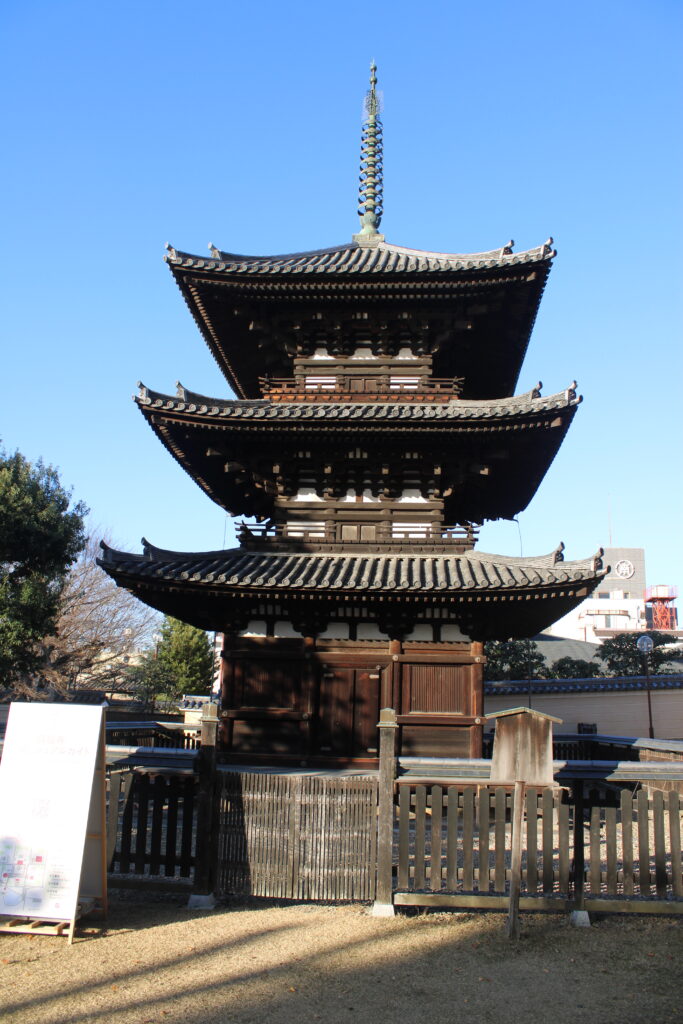
Finally, if you visit Kofuku-ji, it’s not a bad idea to head to Nara Park and enjoy some time with the deer.
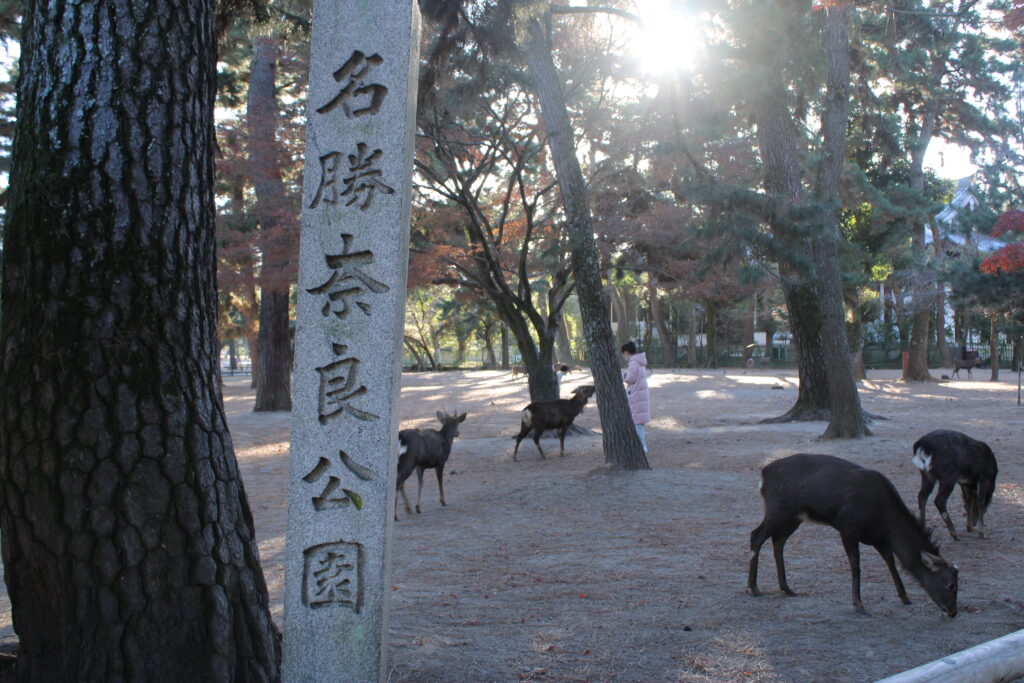
For me, as a first-time visitor to Nara, I was surprised by how many deer there were. There are even deer crackers for sale, so if you feed them, you might become friends with the deer!
By the way, as someone who’s a little scared of animals, I found that it was best to enjoy them from a distance. Apparently, there are cases which people get bumped by the deer’s antlers, so I’d recommend being cautious in that regard.
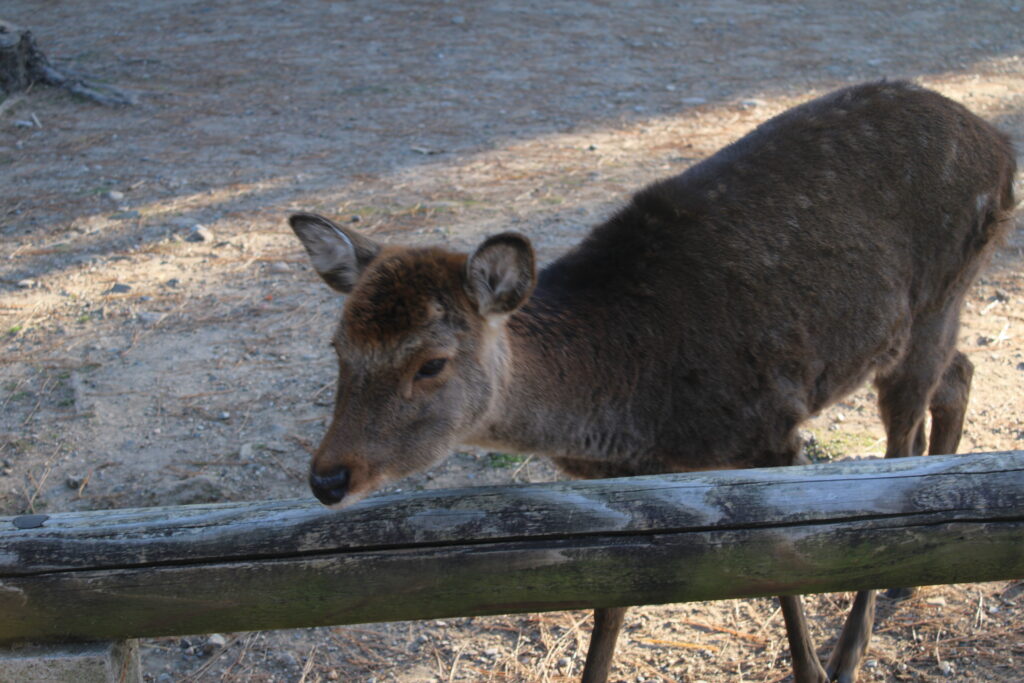
Conclusion
Did I manage to convey the charm of Kōfuku-ji?
Overall, the temple grounds gave me the impression of being well-maintained. Personally, I prefer temples with a natural, serene atmosphere, and in that regard, Kōfuku-ji certainly left a positive impression on me.
However, for someone like me, who has started to develop an interest in history and Buddhist statues, being able to see precious works of art at the National Treasure Hall was incredibly satisfying.

In conclusion, if you’re visiting Nara, I feel that stopping by Kofuku-ji is well worth it. Especially for those with an interest in history, it’s full of works that will spark your curiosity. I highly recommend that everyone take the chance to see these invaluable National Treasures and Important Cultural Properties up close.
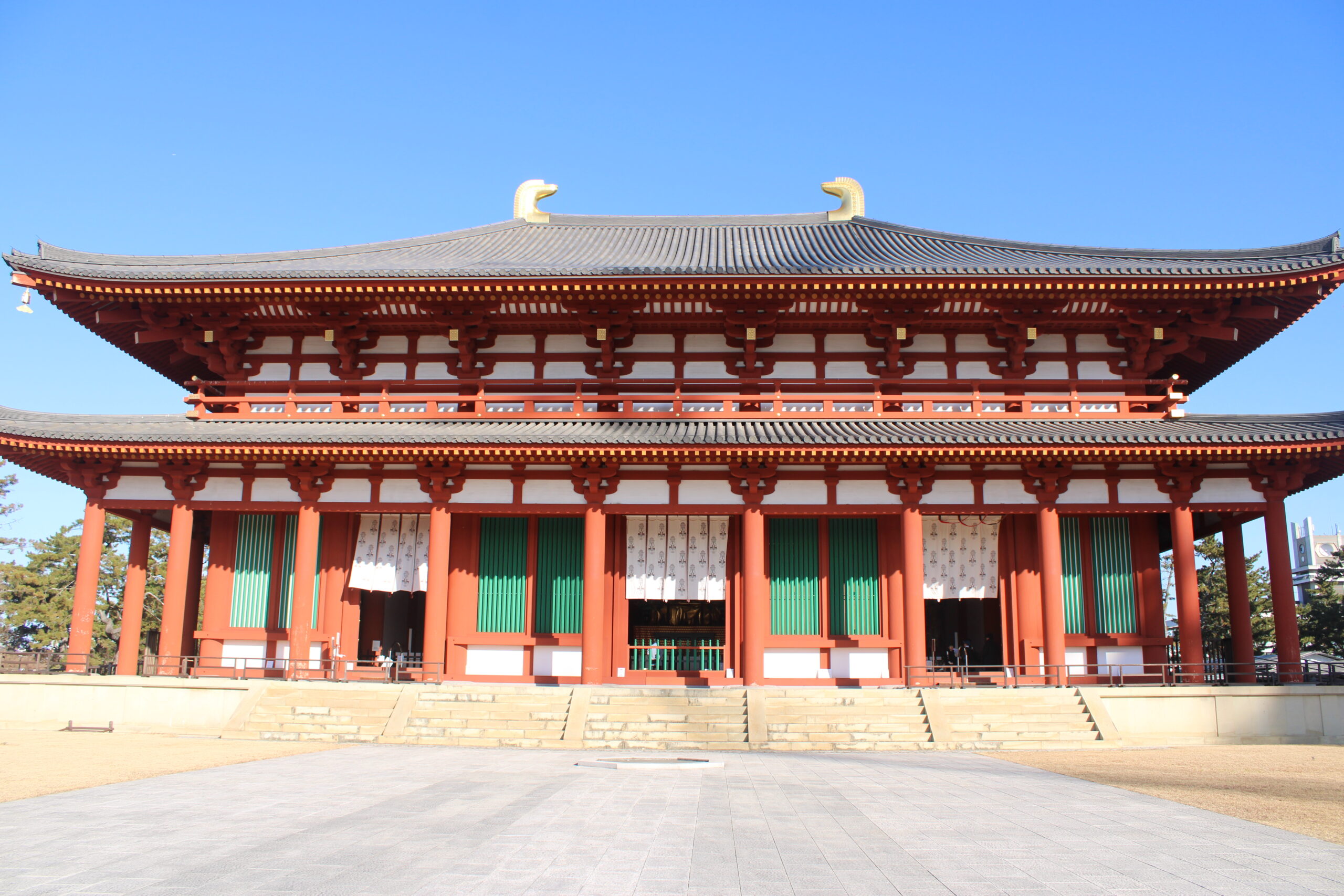


コメント